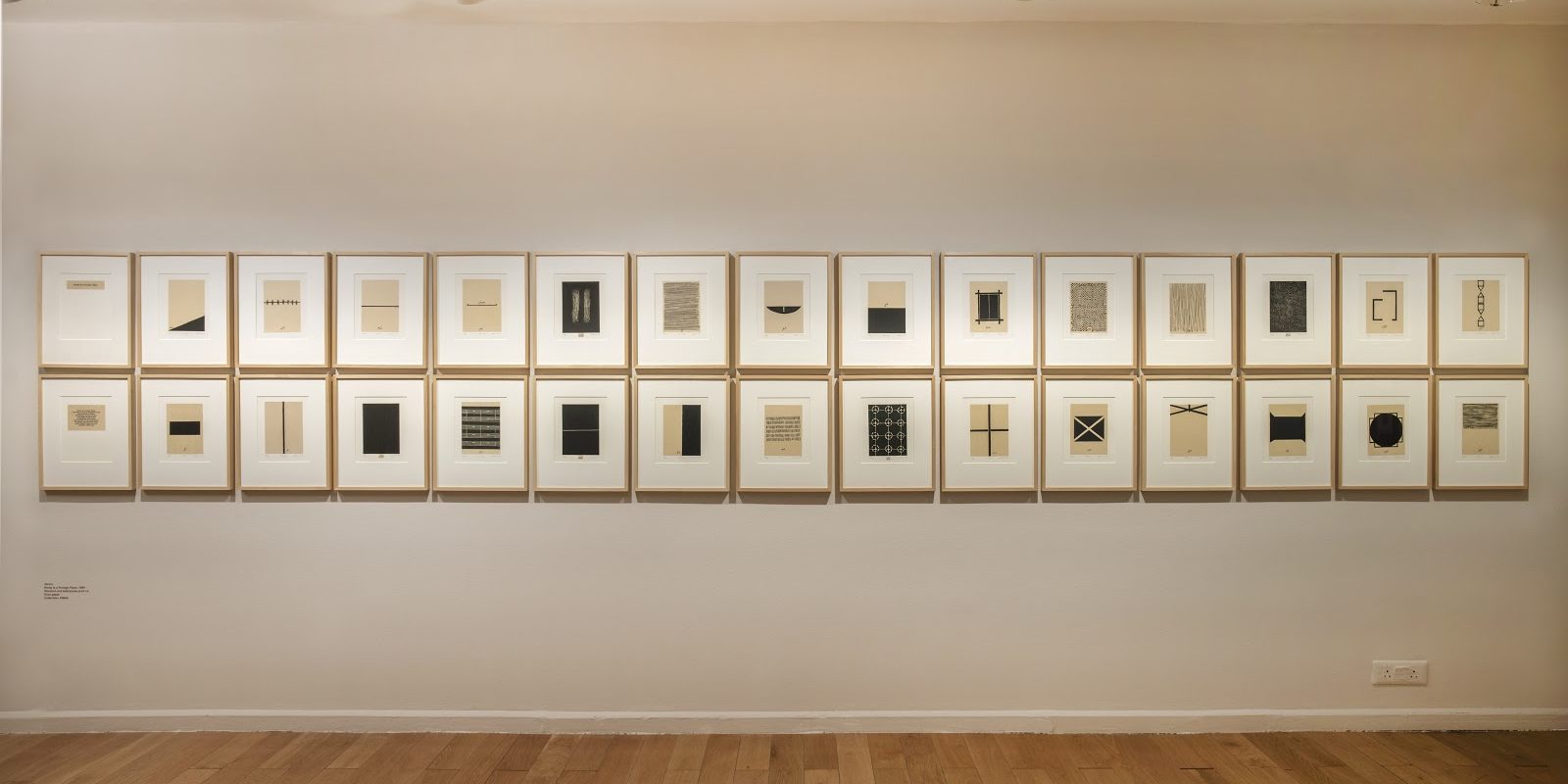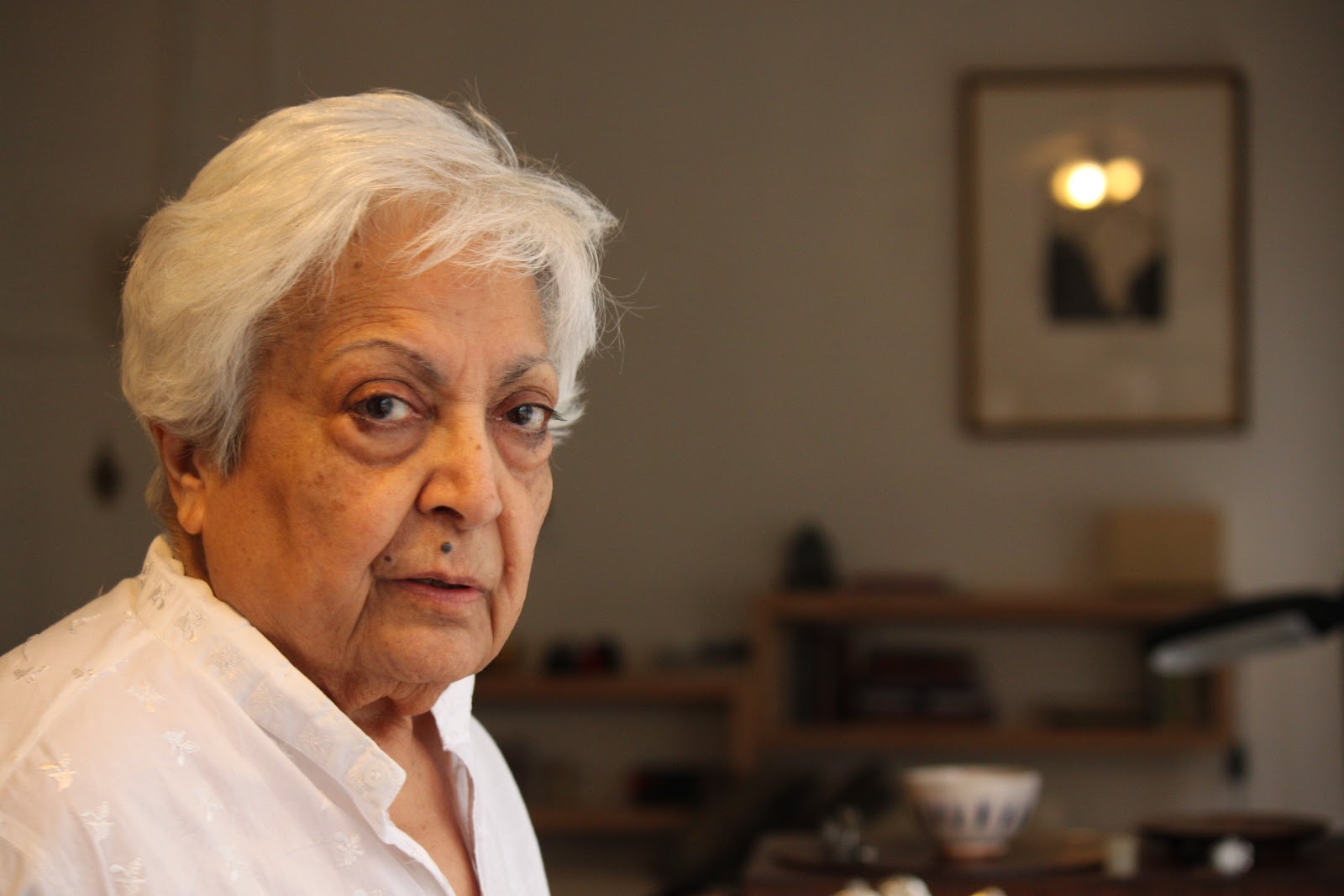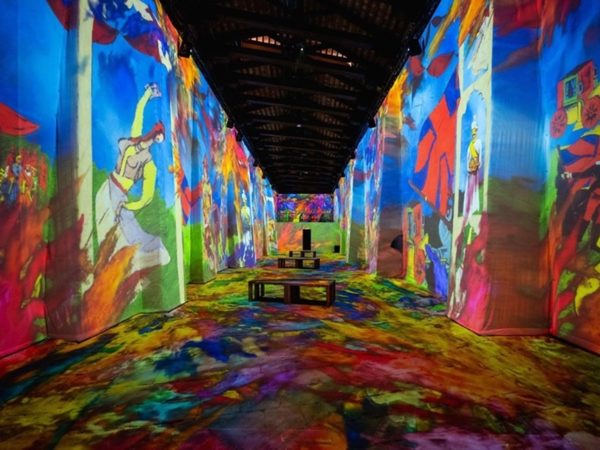Lighting a lamp in the dark house
Blurb: Remembering recently demised printmaker and sculptor Zarina Hashmi
One could feel the wave of sadness waft through the darkening evening as the news spread of the Indian-born, American printmaker and sculptor Zarina Hashmi’s demise in London on 25th April 2020 at the age of 83-years old after waging a long war with her illness.
The last time one met the artist in Mumbai, one was unable to contain one’s urge to touch her hands. The lines on them looked like they were laid down with the same precision and power that characterized her minimal etchings, while the bones looked as if they were sculpted with the same determination.
Hashmi was born in Pre-Partition Aligarh in Uttar Pradesh in 1937, and like a few of her feminist friends at the time, like Nasreen Mohamedi, to whom she was a ‘kindred spirit’, she preferred to use her first name Zarina, in most of her interactions, given that she was one of the very few women among the Indian artists of her time.
Unfortunately, she was unable to travel for her last solo exhibition that one viewed at Gallery Espace, Weaving Darkness and Silence, which opened last year in February 2018, because of her fluctuating health and advanced years. Renu Modi recalls that in 1995 when she first saw Zarina’s work she had no idea how minimalism would do in India, but she knew she wanted to show her works. The exhibition ‘Home is a Foreign Place’ was the resulting solo show hosted in 2000 at Espace. “I was besotted with her work, her simple and yet powerful line, her commitment and faith to her work, the silent, meditative quality it evoked, and her ability to experiment with paper all struck me as unique and very special,” said Modi.
Currently, that late artist has several ongoing shows, including her solo at New Delhi’s Kiran Nadar Museum of Art. To quote its curator Roobina Karode, “Zarina often used to write very poetically about the homes she made, imagined, and inhabited. To recall what she wrote, Within these four walls, my world revolved. Here I looked at the sky, imagined the earth, closed my eyes to the scorching sun, and counted the stages of the moon. I’m really grateful and glad that at the Kiran Nadar Museum of Art we were able to celebrate her extraordinary oeuvre and life.,” says Karode. “I have engaged with her work for decades, and now to curate an exhibition ‘A Life in Nine Lines’ was a very special occasion for me. We created a special wall dedicated to just the titles of her works in Urdu calligraphy and phrases from her very poetic writings. In Zarina, we find how the trauma of Partition and pain of unbelonging take complex existential dimensions through a bare abstraction, as a mystical flight that takes history as the point of departure. Zarina conjured a world with the idea of ‘home’ and ‘homes’, recalling different times, places, and emotions of (un)belonging,” adds. Zarina journeyed simultaneously through many places, physically and spiritually. Her life between California and New York, and journeys back to hometown Aligarh and to Delhi, raised altered realization of the idea of home.
Abstraction in art had often been a male domain and enterprise. Inclined towards revising and rethinking historical models, KNMA has been actively involved in presenting the non-representational works of Nasreen Mohamedi, Zarina, and other women artists, exploring the lure and the limits of the abstract.
Zarina is also showing at the Pulitzer Arts Foundation in Missouri, and a group exhibition at the Guggenheim and Met Breuer in New York.
“Such courage, determination, and grace –Zarina was a survivor against all odds and a visionary artist who engaged with historical crises that were as epic as they were intimate,” said Ranjit Hoskote, an art critic, curator poet and cultural theorist, who has shown Zarina’s work at the first Indian Pavilion at the Venice Biennale in 2011. “It was absolutely central for me to have her work at our first-ever pavilion at Venice. She was deeply moved to be there. She came to Venice, even though she’d just gone through a knee replacement surgery. There’s no wheeled traffic in Venice – she walked across bridges and piazzas,” he recalls. Hoskote has also shown her work at the 7th Gwangju Biennale, a show called Zameen for Art District, Delhi, 2014, and at Anti-Memoirs, his show for the Serendipity Arts Festival 2017.
The artist also showed with critic-curator Meera Menezes who showed her work at Sakshi in 2017, Here be dragons and other coded landscapes and Shadow Lines: Experiments with light, line, and liminality at Shrine Empire Gallery. “During my interactions with Zarina, I got to know her both as a writer and curator. I remember going down to the IIC, where she always stayed when she was in Delhi, to interview her over the years, and then catching up with her during her participation at the Indian Pavilion at the Venice Biennale in 2011. During the lockdown and period of self-isolation, I have been thinking of her series Home I made, A Life in Nine Lines was with a few simple lines she so forcefully captured her memories of the various homes she had lived in all over the world. I loved Zarina’s works for their minimalism and how forcefully they spoke in their simplicity. At an interview with me in 2017, she said to me “I believe in the value of craft. I like things to be well crafted, as Kandinsky said, “Art is to be made by hands and relished by the eyes.”’.
Through her work ranging from minimal drawing to printmaking and sculpture, she explored the ideas of home and distances. She was also known as one of the few women to have a private flying license and she piloted private flights in a rented jet in Mumbai during her visits and much of her work is inspired by ‘aerial memory maps’ that she drew after her experiences of flying. She once wrote for a 1987 sculptural piece titled Flight Log: “I tried to fly/ Got lost in the thermal/ Could never go back/ Having lost the place to land.”
One can be sure that the late artist has landed somewhere special in a place of rest and eternal rebirth in the pages of history, as one of the artists who with a few strokes of genius, is able to evoke mood, movement, and metaphor.
Text By Georgina Maddox
Image Courtesy: Manisha Gera Baswani, Kiran Nadar Museum of Art Nadar and Espace
Find out more about the Artists and Gallery:
http://www.galleryespace.com/artists/gallery-espace/zarina-hashmi/
https://www.knma.in/artist/nasreen-mohamedi
https://www.galleryespace.com/
















